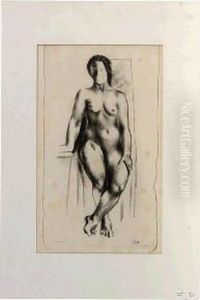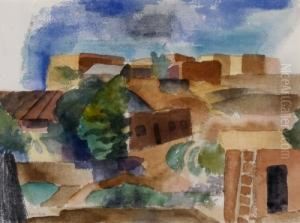Willard Nash Paintings
Willard Nash was an American painter associated with the modernist movement, particularly known for his role in the Taos art colony in New Mexico. Born on May 27, 1898, in Philadelphia, Pennsylvania, Nash moved with his family to Detroit, Michigan, during his childhood. He expressed an interest in art at an early age, and after serving in World War I, he decided to pursue his passion for painting.
Nash studied at the Detroit School of Art and later at the Art Students League in New York City, where he was influenced by the works of the Ashcan School and the European modernists. His style evolved to incorporate elements of realism and impressionism, with a distinct modernist edge. In 1920, he moved to Santa Fe, New Mexico, becoming a part of the burgeoning art community there. His exposure to the landscapes and cultures of the Southwest had a profound impact on his work.
In the early 1920s, Nash became one of the founding members of the Los Cinco Pintores (The Five Painters), which was the first group of modernist artists based in New Mexico. This group was committed to bringing modernism to the Southwest, and they were known for their colorful, avant-garde paintings that often depicted the unique Southwestern landscapes, its people, and their traditions. Nash's work from this period is characterized by bright colors and dynamic, even cubist-inspired, compositions that reflected his modernist sensibilities.
By the 1930s, Nash had established himself as a significant figure in American art. His work was exhibited in galleries and museums across the United States, including the Museum of Modern Art in New York. Despite his success, Nash struggled with personal issues and the economic hardships of the Great Depression. Nevertheless, he continued to create works that showcased his evolving style, which included urban scenes and industrial landscapes, reflecting his interest in the changing American environment.
Willard Nash's promising career was cut short by his untimely death on June 3, 1943, in Albuquerque, New Mexico, at the age of 45. Although his life was brief, he left behind a legacy as one of New Mexico's most important modernist painters. His works are still celebrated for their unique blend of realism and modernism, capturing the essence of the American Southwest and its transformation during the early 20th century.

